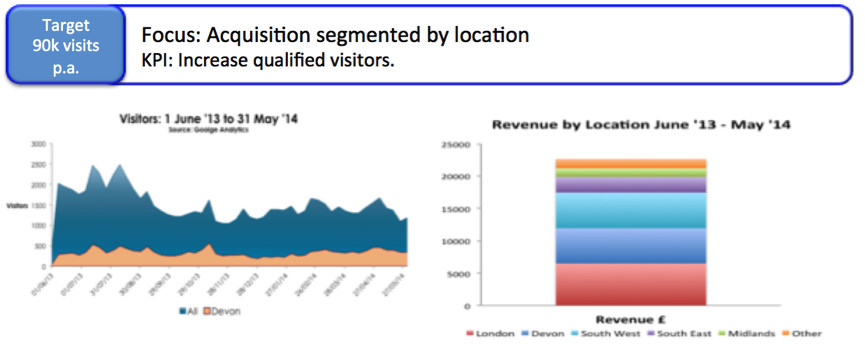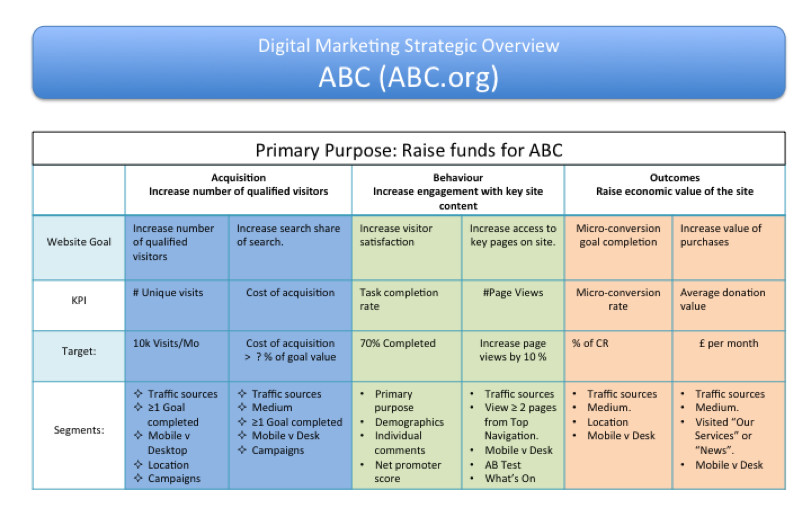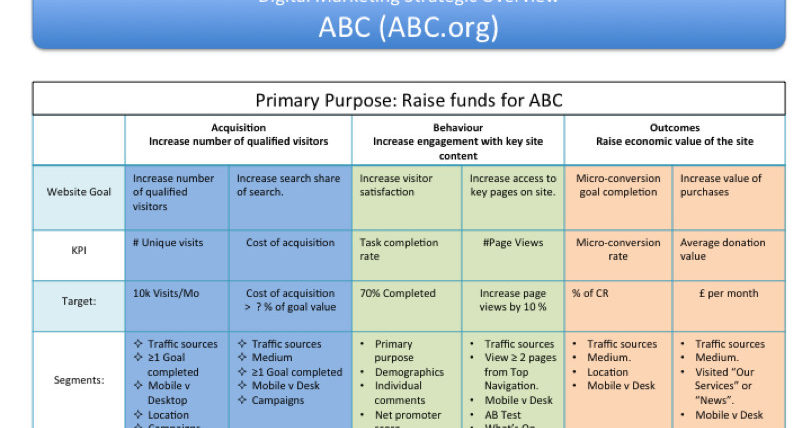Do you have a web measurement framework for your digital marketing?
Do you have a web measurement framework for your digital marketing?

It’s an observed fact that many digital strategies do not achieve business goals. Why is this? It’s because too many businesses rely on guesswork and conjecture or he opinion of marketing gurus when coming to important strategic or tactical digital marketing decisions.
And so, businesses lavish immense effort, time and money to produce a beautifully designed website. Or they will attempt to plug gaps in revenue by running expensive paid search or display campaigns.
Unfortunately, in many cases, these activities just don’t work. Not only are they draining valuable marketing budget but worse still these actions actually hinder the company from taking the actions need to actually grow their business.
So why does Web analytics change the strategic landscape?
What Web analytics does is to provide some rigour to the process of digital marketing strategy. Web analytics is an evidence approach which uses your companies website data and other relevant information, such as completive analysis and benchmarking to provide a firm footing of facts as a basis for making strategic and tactical business decisions.
A key point to make at this point is that while it is possible for the web-marketing analyst to complete all the tasks for Web Marketing Framework document, the process will have much greater value if it can be completed with the active involvement of business management. So for the remainder of this document, it assumes that business leadership is fully involved in the task.
Digital Marketing Measurement Framework
The crucial first step in creating a robust digital marketing strategy is to begin by defining the business objectives for their online marketing and defining the key business objectives for the website, in other words, to create a Digital Marketing Framework. This involves several steps, which can be recorded on a concise one-page report.
Understanding the primary purpose of your website
Why does your website exist? What is its primary purpose? This is a really important first step since all the objectives and measurement tools must all be funnelling into driving the website’s primary purpose. Without this fundamental foundation, there is a significant risk that the digital marketing activities will not achieve business goals.
Focus on key website objectives
Flowing from this primary purpose we then focus on the three broad objectives that need to be addressed in or to create success on the website:
- Acquiring visitors: all the actions and activities that bring visitors to the site, e.g. search, web marketing, social media etc. In other words, any activities that you do before to get visitors to come to your website.
- Behaviour: this looks at what people do once they arrive on your site. The reality is that at any point, 98% of your visitors will not become customers. They will have a variety of reasons for visiting your site. Some of these visitors will become customers in the future. Analysis of behaviour helps you to understand what people’s interest is on the site. Furthermore, it will identify which of the actions that are taken by visitors are more likely to turn them into customers (or help turn other people into customers – like completing a review). So offering more video content or whitepapers or improving the navigation will improve the user experience as well as potentially benefiting your business.
- The outcomes: naturally for most online businesses it is the level of sales that counts most. Web analytics can find ways in which visitor move through the buying process and can find ways to improve this. Moreover as mentioned above there are many other types of activities that will positively impact your business. For example, putting a lead generation form on site is a great way of helping to identify the most likely potential customers, increasing conversion rates and reducing sales costs.
Creating Key Performance indicators for each website objective
Identifying the correct KPIs is the critical next step as these are the metrics that link your business objectives with the plethora of web analytics data that are available and enable the business to focus on the critical few metrics that tell the business whether it is achieving its business goals.
Ideally, there should be between 5 and 7 KPIs. Too few and the measurement model is too narrow. Any more than 7 and they become too unfocused and become difficult to manage and to influence.

Setting targets and segments
Once the KPIs have been agreed then the next step is to begin to benchmark these KPIs through the use of targets. These enable the business a line of site to understand whether performance is moving in the right direction and whether corrective actions are needed.
The final area is segmentation. Looking at aggregated data is generally not at all insightful. Key changes that the business needs to understand to make changes are often swamped by the sheer amount of data flow, or a trend becomes masked by other factors. Segmenting the data and monitoring these segments is essential if the nuggets of gold in the data are to be found and acted upon.
Review and improve
Creating the web measurement framework is only the first step. It needs to be part of an on-going cycle of business improvement. This includes the Web Marketing Framework. The KPIs will need to be updated or discarded for other ones that better reflect the business’s market position. Furthermore, the primary purpose of the business itself may also change and this will affect web objectives and measurement.

Conclusion
This measurement framework provides a powerful model for measuring how successful the website is in meeting the expectations for the business. And through an effective analysis of the different segments there is a path towards making further improvements.

